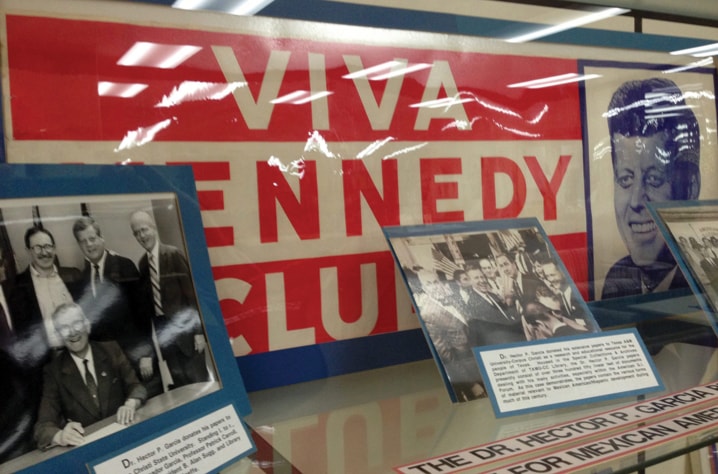CORPUS CHRISTI, Texas — For most residents from bigger Texas cities, the South Texas city of Corpus Christi has always been a day-trip destination for a quick beach getaway. But often overlooked are the coastal city’s deep roots in Mexican-American history, some of it wrapped up in the civil rights movement.
And while Corpus Christi doesn’t have a huge number of museums or landmarks connected to Latino history, visitors can find plenty of interesting things to see, from an exhibit about a physician and civil rights leader to a statue of the late Tejano star Selena.
Corpus Christi was formally founded in 1839 as a trading post, but it’s likely that shipwrecked Spanish explorer Alvar Nunez Cabeza de Vaca explored the city’s shores in the 1500s with African slave Estevanico.
The shipwrecked travellers became famed healers among American Indians, visiting the sick in villages throughout what is now Texas, which historians later characterized as an early example of a multiracial effort.
Little physical evidence of that voyage exists in the city today, but the Corpus Christi Museum of Science and History offers an exhibit of artifacts from another excavated Spanish shipwreck which includes a section of the ship’s wooden keel and verso guns.
In more recent times, Corpus Christi served as the launching pad for the League of United Latin American Citizens (LULAC), once the largest Latino civil rights group in the nation.
Founded in 1929 by World War I veterans, the group served as a key player in some of the most dramatic moments in the Mexican-American civil rights movement.
The group helped raise money for a legal team led by San Antonio lawyer Gus Garcia and Houston attorney John J. Herrera to successfully take a case to the U.S. Supreme Court in 1954 challenging a ban on Mexican-Americans serving on juries in some parts of Texas.
But there’s no tangible tribute to LULAC’s history in the city, other than an education centre and apartment complexes bearing the name.
“It really bothers me,” said Nick Adame, current president of LULAC Council No. 1, who is working to build a South Texas Civil Right Museum in Corpus Christi. “There are museums for everything else. We need to change that because this city was so important to the movement.”
There does exist, however, a nice exhibit to the late Dr. Hector P. Garcia at Texas A&M University-Corpus Christi.
The physician and civil rights leader founded the G.I. Forum and helped bring national attention to a funeral home in Three Rivers, Texas, that reportedly refused to offer chapel services for a Mexican-American World War II soldier killed in battle.
(A graduate student later argued that the funeral home owner didn’t want his chapel used not out of racism but because of a dispute between the widow and the soldier’s father-in-law, a story that at least three historians said has been proven false).
Garcia also played a role in organizing Mexican-American World War II veterans who raised money to pay for poll taxes and later led the Viva Kennedy Clubs in Texas to help elect John F. Kennedy to the presidency. Garcia also provided health care to thousands of poor Mexican-Americans, sometimes at his own expense.
The exhibit housed at the school’s Mary and Jeff Bell Library displays Viva Kennedy memorabilia, letters from various presidents and photos from the Mexican- American civil rights movement.
Also kept at the library are Garcia’s papers, which are popular among historians writing about the civil rights movement in Texas.
“Dr. Garcia kept everything,” said Grace Charles of the library’s Special Collections & Archives. “He left a trail that tells us a story of his time.”
In addition, every year in January on Garcia’s birthday, dozens of Latino veterans come to Seaside Memorial Park, where he is buried, to pay their respects.
But by far the most visited place in Seaside Memorial Park — and possibly all of Corpus Christi — is the resting place of slain Tejano singer Selena.
Born Selena Quintanilla Perez, the rising Mexican-American star was killed in March 1995 by a distraught fan. Her death at age 23 was mourned all over Texas and has brought thousands of visitors to her resting place, where many leave money, lipstick and flowers in her honour. Her slaying came just as the Tejano star was attempting to crossover into mainstream music with hopes of becoming the most popular Mexican-American singer of all time.
Not far from Selena’s resting place is a museum dedicated to the star. Operated by her family, the museum displays some of Selena’s dresses, her Porsche, and music memorabilia.
There’s also a Selena statue at the seawall where fans leave notes and take pictures. It’s as if they’re saying, “At least you will not be forgotten.”
